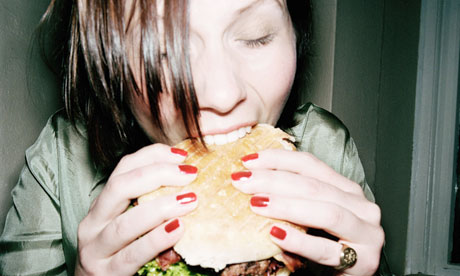
Although the author himself does not always seem to realise it, this cheerful summary of the brain's reward system is a profound experience. David Linden is professor of neuroscience at Johns Hopkins University in Baltimore, so he knows what he is talking about, and he explains it early. "Shopping, orgasm, learning, highly calorific foods, gambling, prayer," he says, "they all evoke neural signals that converge on a small group of interconnected brain areas called the medial forebrain pleasure circuit."
Our understanding of this began, Linden goes on to explain, with some luridly unethical experiments. In one of the more laidback laboratories of the 1970s, an American study sought to examine whether one could "cure" homosexuality by electrically stimulating someone's pleasure centres while subjecting them to heterosexual experiences. To this end, researchers implanted electrodes deep inside the brain of a 24-year-old gay male whom they called B-19. Having waited for the surgery to heal, they handed him the controls.
As the paper reports, "B-19 stimulated himself to a point that, both behaviourally and introspectively, he was experiencing an almost overwhelming euphoria and elation and had to be disconnected despite his vigorous protests." Later, the researchers gave B-19 the button back, but only after hiring him a prostitute, whom he very happily had sex with while they watched – "despite the milieu and the encumbrance of the electrode wires". A woman in a different trial "self-stimulated throughout the day, neglecting her personal hygiene and family commitments. A chronic ulceration developed at the tip of the finger used to adjust the amplitude dial."
Having established our respect for the medial forebrain (specifically its ventral tegmental area), Linden explains the exact pleasure processes involved in drugs, food, sex, gambling and generosity. These chapters are filled with similarly entertaining fragments from the learned journals. We discover that overdosing on Parkinson's medication can make you a compulsive gambler; that reindeer fight over patches of hallucinogenic urine; that 19th-century Ireland was struck by an epidemic of ether-drinking; that the only known example of nasal sex in nature can be found among the gay dolphins of the Amazon. (They screw each other's blow-holes.) "I refuse to make the obligatory 'blowjob' joke here," Linden remarks, in one of his many jocund footnotes.
None of which dilutes the book's academic content. For the most part, what we actually read are accounts of different experiments that have been conducted on genetically modified rats. For optimum absorption of the book's ideas by general readers, Linden might have dialled down his scientific language by a notch. That said, it is part of the joy of popular science writing that it can lead one to the point of comprehending sentences such as: "These findings with MK-801 pretreatment suggested that LTP and/or LTD of the excitatory synapses received by the neurons of the VTA was induced in rats as a result of taking cocaine." Even now, I feel a tourist's pride in understanding that.
Yet, though Pleasure is certainly pleasurable, in both its sweet and savoury moments, it is what the book reveals – most obviously about addiction – that is so utterly compelling. In brief, addiction really is a disease, which you can observe with microscopes, and which should be treated non-judgmentally. Every obese person in the world should read the chapter on overeating to discover the scientific basis for why it is not their fault. Those of us lucky enough to have different genes should read it too, if only for the humbling description of how a slimmer's body craves food with the intensity of someone actually starving.
Nor do the revelations end here. What underlies the human pleasure system, Linden explains, is our facility for learning to enjoy a limitless variety of things – which sounds, to me, like nothing less significant than the source of all culture. Going further still, Linden even speculates about a future (and shows that it is far from implausible) in which consequenceless pleasure of any kind can be artificially induced. What a terrifying thought that is to toy with.
To be clear, this book has flaws. Its thematic structure is repetitive, causing the later chapters to feel more like accretions of examples rather than an argument developing. The concluding section on the future, meanwhile, fails to explore the many new ideas it broaches. I even spotted an error, when Linden includes benzodiazepines on a list of non-addictive drugs. (Surely Valium dependence must be known to any doctor?) But these are details worth forgetting. Pleasure is a superb book. My brain has been changed by reading it.
Leo Benedictus is the author of The Afterparty (Cape)

